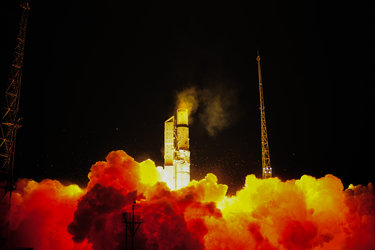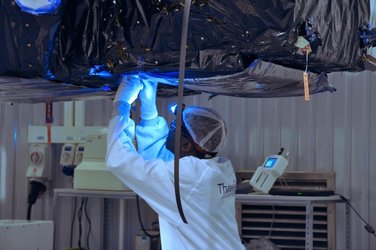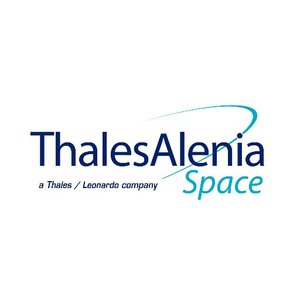Craig Donlon: Mission Scientist
Craig Donlon was assigned to the Sentinel-3 Mission in 2008 and has been involved in the scientific design and development of the mission ever since. As the Mission Scientist, Craig’s role is to help ensure that Sentinel-3 achieves its scientific objectives.

Craig Donlon, a British national, joined ESA’s European Space Research and Technology Centre, ESTEC, in the Netherlands in 2008. Craig has been engaged in Earth observation and oceanography for over 25 years including operational oceanographic service delivery, oceanographic application of satellite data, developing satellite climate data records, research to improve our understanding of air-sea interaction and validation of satellite ocean datasets.
After receiving a PhD in Oceanography (1994) from the University of Southampton, UK, Craig moved to the University of Colorado, Boulder, USA, as an Assistant Research Professor in Oceanography, then in 1998 to the European Commission Joint Research Centre in Italy where he continued to work on satellite oceanography. He became the Director of the Group for High Resolution Sea Surface Temperature at the Met Office UK in 2003, working closely with the World Meteorological Organisation as the Joint Commission on Oceanography and Marine Meteorology (JCOMM) where he was the Services Programme Area coordinator leading several teams dedicated to sea ice, ocean forecasting, wind waves & storm surges and maritime safety systems (GMDSS).
During this time Craig worked with the European Commission MyOcean project that has now developed into the Copernicus Marine Environmental Monitoring System (CMEMS). Since September 2008, Craig has worked at ESA as the Sentinel-3 Mission Scientist as part of ESA/ESTEC Mission Science Division in the Netherlands.
ESA: As Mission Scientist, what have you been responsible for throughout the development of the Sentinel-3 mission?
Craig Donlon
As Mission Scientist, I work closely with the satellite development Projects and the Ground Segment Operations teams providing scientific support for the Sentinel-3 mission. My role includes maintaining the Sentinel-3 Mission Requirements and Mission Requirements Traceability Documents that formally define the purpose and performance requirements for the mission and the scientific basis of the satellite instruments. I also Chair the Sentinel-3 Mission Advisory Group, comprised of leading international scientists who provide formal advice on specific performance issues. To ensure that we are pulling through the best available scientific research results and know-how into the operational context of the mission, I work closely with many different people. For example, following intensive R&D using ESA's CryoSat altimeter over the ocean, the scientific community was able to show significant performance improvements when operating an altimeter in a synthetic aperture radar (SAR) mode. Pulling this information together and working across all Sentinel-3 teams and with the European Commission, the Sentinel-3 mission was modified to operate its altimeter in SAR mode over all surfaces (rather than just in the coastal zone as originally planned). Being Mission Scientist is a fantastic multifaceted role and demands a broad knowledge of all mission aspects and close interaction with Copernicus Services, the European Commission, Eumetsat and many international scientists, to ensure we will deliver the best quality data from Sentinel-3 to support Copernicus. I love it!
ESA: A whole range of data is expected from Sentinel-3, can you please explain what these datasets will be used for?
Craig Donlon
Temperature is something we experience everyday - when we go outside, or go to the beach, and, we need good measurements to understand how the global temperature of the oceans and land - affect our local weather and climate. What happens over the distant ocean impacts our local daily weather and this is a fundamental reason why weather prediction centres first need to monitor the global weather patterns before making local and regional weather forecasts.
The ocean covers 70% of Earth's surface and its heat content, for example, regulates our European climate (think about the winter temperatures at the same latitude in Europe and Canada). Sentinel-3 will measure variations in both surface temperature and sea-surface height at the same place and time, which will be used to better understand how ocean heat content is changing, helping Copernicus Services deliver better ocean, weather and climate forecasts. For example, the current El Niño in the Tropical Pacific is very strong (some are calling it the Godzilla El Niño!) disrupting the pattern of atmospheric circulation, jet-streams, storm tracks and their intensity, rainfall, causing drought and wildfires in many areas of the world. Sentinel-3 will be there soon to monitor uniquely, at the same place and same time, the sea-surface temperature, the sea-surface height, ocean heat content and, ocean ecosystems giving us the bigger picture to help improve our scientific understanding and predictions of El Niño and monitor its future impacts.
Sentinel-3 radar altimeter data also help maritime operations by improving predictions of ocean-surface currents and surface waves by Copernicus ocean forecasting systems. These data will help ensure safe maritime operations. These measurements will also help shipping companies to reduce their carbon emissions (reduced fuel), by charting more efficient ocean passages that can make full use of ocean currents, rather than fight against them.
Societies are changing and more and more people are moving to coastal megacities with a hunger for fish and seafood, freshwater and service infrastructure. But our marine and terrestrial ecosystems are sensitive and fragile to the increasing demands and pressures of mega-coastal populations, pollution and coastal development. Sentinel-3 measurements can regularly and repeatedly assess the health of our marine ecosystems, of agriculture and inland water resources and help us manage, adapt to, and mitigate the impact of societal change.
Sentinel-3 radar altimeter data will also measure sea-level change. Understanding the threat and impacts is an important challenge to the future management of our coastal and island populations, coastal ecosystems and infrastructures. Globally, sea level is rising at ~3mm year, seen in historical satellite and in situ data, but regionally we can see that some areas are rising faster that others. We need to find out why and Sentinel-3 will make a major contribution to that task over the next 15+ years.
The operational sustained nature of the Sentinel-3 mission means that data products and dissemination services to Copernicus services in the land, ocean, climate and emergency domains will have data at their fingertips and provide answers to our societal challenges with confidence.
ESA: The Sentinels are built for the Copernicus services, but will data also be used for science?
Craig Donlon
Yes, the data are extremely important for science and society: Today’s Science is Tomorrow’s Applications and Services. We can think of the Copernicus Earth Observation 'currency' as accurate scientific measurements from space. But for these measurements to be used by citizens, industry, governments and policymakers they must be translated into practical knowledge and information. Questions including: when will an oil spill reach my beach? Is the algae I can see in the sea harmful? When will the Arctic sea ice disappear? How safe is it to service my offshore installation? How are my crops being stressed by drought? How can I manage wildfires? What is the status of my forests health? How are the world’s ice-sheets changing? Will sea-level changes affect my house, garden and insurance? How do we improve our seasonal forecasts, our forecasts of El Niño and our climate prediction? These are just a few examples to the many issues that Copernicus is dealing with on a day-to-day basis that require the best scientific support.
We need mathematical tools and scientists to get the right answers to these questions, and to present them in the right way. As scientists gain confidence in their ability to answer some of these questions using Sentinel-3 and other Copernicus datasets, improvements to operations can be made. Great science, great research and great operations together mean that we can deliver the best-quality information to see how European policies and decisions impact not just us as citizens, but how they interact with other countries and regions in the rest of the world. That's why Sentinel-3 will be in your service - delivering the best scientific data products within three hours of sensing 24/7, 365 days a year.
ESA: What have been the most challenging aspects of the mission in terms of science?
Craig Donlon
It takes many years to develop a satellite mission and one of the most challenging aspects of the mission in terms of science is the long wait to bring the instruments and data-flows online and to get down to the business of routinely mapping Earth surfaces using Sentinel-3's instruments! With the loss of Enivsat in 2012, significant efforts have been made to ensure that we can tie together the data records between Envisat and Sentinel-3 using a wide variety of approaches, including the use of other satellites and ground measurements. We have established a Sentinel-3 validation team of international experts to help us in this endeavour, as well as a set of activities that strive for fully traceable ground-based fiducial reference measurements, which we will use to verify that our mission requirements have been met. Another aspect has been navigating the new world of operational services within Copernicus and advocating for the best scientific approach to solving the needs of the services. It is an ongoing challenge that all of us working across the immense Copernicus infrastructure face as we learn how to deliver the best from the best. But the big and beautiful scientific challenges are to come as we exploit the data to better understand our world.
ESA: What have been the most rewarding aspects of working on this mission?
Craig Donlon
Without a doubt, I can say that the most rewarding aspect is the support and interaction with people from many different disciplines at the technical, scientific and political level. The Sentinel-3 team cross enthusiasm and commitment to getting the job done, which is immensely satisfying. Explaining the Sentinel-3 mission to new audiences is also great – once people realise what is coming you can see their minds clicking and whirring away as they plot and plan how to start using the data in their own work. As we approach launch and early operations I cannot wait to see the first images from our optical instruments, the first waveforms from our altimeter and start the initial validation activities. I fully expect that Sentinel-3 will deliver some astounding measurements as we move forward. Sharing the personal wonder and fascination of the data with the international Copernicus community will be a wonderful experience. While you can make music alone, it’s a richer experience when you make music together. Over the past eight years, my life in Sentinel-3 has been a wonderful musical score because of all the great people involved.
ESA: Will you still be involved with the mission once the satellite is in orbit delivering data?
Craig Donlon
While I will continue as Mission Scientist for Sentinel-3 through the development of the Sentinel-3B, C and D units, my role will change. After five months of initial commissioning activates, our Mission Managers will take over the daily management of the Sentinel-3 mission. I will continue to work with the development of the follow-on Sentinel-3 missions and, in particular, with the Mission Manager, providing scientific inputs with a focus on the validation and scientific quality of the data products. This is important because we need to ensure that we learn as much as possible about instrument performances as early into the mission flight as possible, so that and lessons learned may be used to improve follow on missions if necessary. In addition, together with colleagues at ESA and in the international scientific community, I will lead studies to both exploit and improve the measurements made by the mission. This will be particularly important when we launch future Sentinel-3 satellites, as we will need to carefully cross-calibrate the instruments of the A, B, C and D units. There is so much to look forward to once this exciting mission is flying for Copernicus and my role will continue to deliver new and exciting challenges for many years to come.
Editor's note:
This is one in a series of interviews with some of the key people that are involved in the Sentinel-3 mission. Please check back as further interviews will be added in over the coming weeks.








